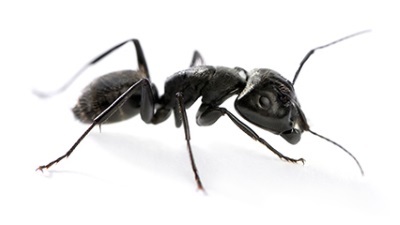Our Pest Control Chicago Ideas
Our Pest Control Chicago Ideas
Blog Article
The Buzz on Pest Control Chicago
Table of ContentsSome Known Facts About Pest Control Chicago.The Best Guide To Pest Control ChicagoThe Ultimate Guide To Pest Control ChicagoThe Main Principles Of Pest Control Chicago Rumored Buzz on Pest Control ChicagoThe smart Trick of Pest Control Chicago That Nobody is Discussing
Planting or collecting a plant before (or after) a parasite exists decreases pest damage by avoidance. Capturing and computing an insect's expanding level days can help with preparing around an insect's lifecycle. Damage tolerance can sometimes be attained by growing a crop early to make sure that the plants are stronger, extra resistant, and extra tolerant to damages by the time insect pests are present.
By developing a small, regulated space that the parasites like, it is possible to divert bugs away from the main crop. Two techniques for this are trap cropping and strip harvesting. is planting a favored host plant of an insect bug near the key plant that is to be secured.
If required, the parasites can after that be eliminated in the catch plant. Trap plants can be any types that the pest preferseven coincide species as the primary plant - Pest treatment professionals in Chicago. If the trap crop is the very same types as the main crop, it must be planted at a time that will best draw the bug far from the primary crop
The 6-Minute Rule for Pest Control Chicago
 This practice is useful when collecting a catch crop due to the fact that it maintains some environment for the pest. Therefore, the pest does stagnate to locate new habitat in a nearby higher value or more susceptible plant. https://dzone.com/users/5213860/pstc0ntrlchg.html. The methods already pointed out concentrate on minimizing crop direct exposure to insect parasites, but it is also feasible to reduce yield loss even when insect damage takes place
This practice is useful when collecting a catch crop due to the fact that it maintains some environment for the pest. Therefore, the pest does stagnate to locate new habitat in a nearby higher value or more susceptible plant. https://dzone.com/users/5213860/pstc0ntrlchg.html. The methods already pointed out concentrate on minimizing crop direct exposure to insect parasites, but it is also feasible to reduce yield loss even when insect damage takes placeTo exercise IPM in the landscape, pick plants that are well suited to the site. Plant them properly and keep the plants healthy and balanced by meticulously watering, fertilizing, and pruning them. Enjoy out for issues on your plants as they arise. If an insect or illness causes undesirable damage in spite of preventative efforts, choose an efficient administration technique that will certainly have the least amount of influence on various other living creatures and the environment.
Rumored Buzz on Pest Control Chicago
 Seek signs and symptoms the plant displays as an outcome of bug activity. Examine your plants often. Determine your plants to ensure that the twisted leaves, uncommon coloration, or strange-looking structures you see are not a regular component of the plant. Try to dismiss site-related issues by making certain that the dirt type, drain problems, fertility level, and other environmental problems are desirable for the plant.
Seek signs and symptoms the plant displays as an outcome of bug activity. Examine your plants often. Determine your plants to ensure that the twisted leaves, uncommon coloration, or strange-looking structures you see are not a regular component of the plant. Try to dismiss site-related issues by making certain that the dirt type, drain problems, fertility level, and other environmental problems are desirable for the plant.Insects and mites commonly are connected with specific plants, and they follow certain advancement and behavior patterns as the period advances. Usage referral books from the library or garden center to identify bugs. If you can't locate an accurate description there, speak with someone in your neighborhood expansion office. Learn more about the insect's life cycle, habits, and natural opponents.
If so, an application of a nonselective pesticide might kill them, allowing the pest populace to rebound spontaneous by predators and bloodsuckers, which may have been giving considerable control. If a control is needed, think about physical or biorational approaches initially. If they are unavailable or not practical, you might require to thoroughly use a conventional chemical control.
Excitement About Pest Control Chicago
 For instance, some aphids and mites can be knocked off by spraying the plant with water. Bagworm larvae can be chosen off a ravaged plant. You can make use of catches to capture certain insects, and barriers to secure plants from insect strike or disease infection. One reliable technique for regulating gypsy moth larvae on handful of trees is to put a band of folded up burlap around the tree trunk to offer a man-made resting site for the caterpillars, and afterwards ruin the caterpillars that collect there.
For instance, some aphids and mites can be knocked off by spraying the plant with water. Bagworm larvae can be chosen off a ravaged plant. You can make use of catches to capture certain insects, and barriers to secure plants from insect strike or disease infection. One reliable technique for regulating gypsy moth larvae on handful of trees is to put a band of folded up burlap around the tree trunk to offer a man-made resting site for the caterpillars, and afterwards ruin the caterpillars that collect there.In some situations, the very best solution might be literally getting rid of the plant and replacing it with one that will not be affected by the bug or disease. Thinning jampacked plants to boost air circulation can minimize several condition issues. Biorational approaches can be divided into 2 teams. The very first group includes living organisms that can kill the insect.
An instance of an approach that utilizes a normally occurring biochemical is the bacterium Bacillus thuringiensis (Bt). Bt includes a protein that is toxic to certain bugs, yet harmless to other microorganisms.
Our Pest Control Chicago Diaries
When the sensitive insect bug preys on the splashed leaves, it will go to this website certainly ingest the protein and be eliminated. Conventional chemicals are utilized just as a last resort in an IPM program, however often are the most reliable methods of control. To have the best impact, these products need to be applied on a particular part of the plant when the bug is most at risk.
Oftentimes, eco secure chemicals such as gardening oil or insecticidal soap are efficient choices - https://profile.hatena.ne.jp/pstc0ntrlchg/. Once more, applications should be timed very carefully to have the best effect on the pest insect population. Due to the fact that they have no residual task after they have dried, soaps and oils are generally the alternative that is the least disruptive to populations of beneficial organisms
These words, from least poisonous to most hazardous are: "caution," "warning," and "threat." Utilize these words as standards to aid you choose the least hazardous product amongst the efficient choices. For a lot of landscape bugs, you require to take into consideration pesticides in just the initial 2 classifications. Some chemical formulations can be applied only by applicators with special training and who are certified by the state's department of agriculture.
Our Pest Control Chicago PDFs
Describe the Woody Ornamental Bug, Termite, and Disease Administration Guide, released by Penn State Extension, or to an additional existing recommendation for a list of products that are registered for use on plants in your state. Read the label to be sure that you have actually selected an item that works against the bug you have actually determined, and select your timing based upon specialist referrals.
Report this page